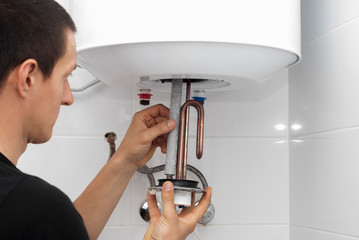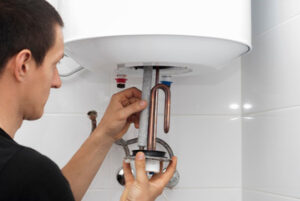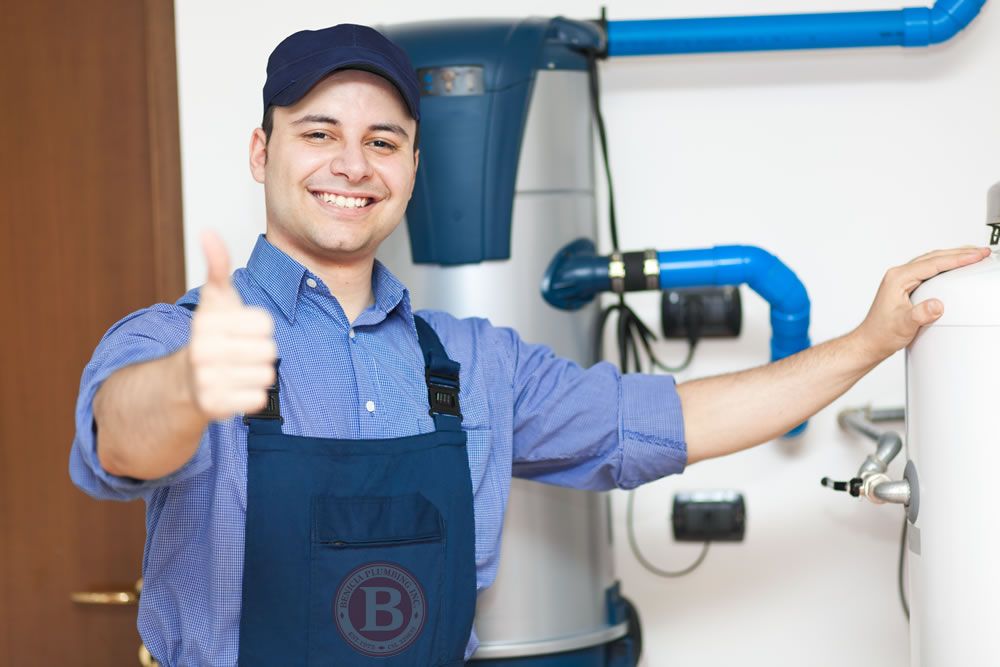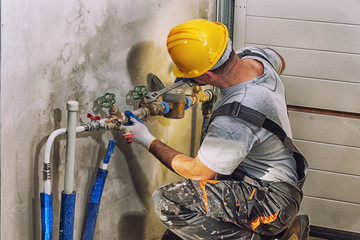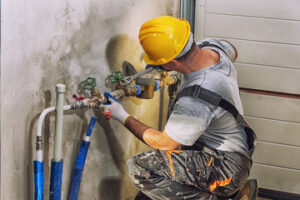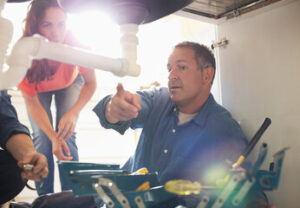Plumbing is the network of pipes, fixtures, and appliances that deliver fresh water and remove wastewater in residential and commercial buildings. Professional plumbers install, repair, and maintain these systems.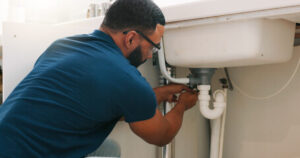
Plumbers with excellent people skills can forge long-term relationships with customers and help them avoid costly repairs in the future. Contact Rosenberg Plumbing for professional help.
A plumbing system delivers fresh water into a building and removes wastewater, essential for hygiene and comfort. It involves pipes, fixtures and appliances that facilitate cooking, cleaning, showering, washing clothes and toilets. Without it, life would be more difficult and unpleasant. A good plumber understands the basic laws of gravity, pressure and water seeking its own level to provide you with a functional plumbing system that is safe and efficient.
The water supply begins with a main line that brings freshwater in from a city water system or private well. This pipe enters your home and connects to a water meter that tracks your household water usage for billing purposes. It also has a main shut-off valve that allows you to cut off your water supply in the event of an emergency.
Once the freshwater enters your home, it travels through a network of distribution pipes to all the faucets and appliances in your home. These pipes are typically made of copper, PEX or PVC. A water heater heats the water for use in your home, and a hot water line parallels the cold water line to supply showers, bathtubs, sinks and appliances like dishwashers and washing machines.
All the pipes in your plumbing system are designed to deliver water at a steady rate, but problems can arise. Old or faulty pipes may leak, burst or break, causing flooding and severe water damage. A quality plumber inspects your plumbing on a regular basis to prevent these problems from occurring and ensure your plumbing is working as it should.
The drainage system carries waste and water away from your home to the sewer or septic system, where it is safely removed from your property. It includes all the drain pipes in your house, as well as the vent system that ensures sewer gases do not escape into the living areas of your home. Your plumber will assess your drain lines to ensure they are free of blockages and that water and sewage flow properly from all the fixtures in your home. They will check for proper venting, cleanouts and a functioning trap.
Drainage
The plumbing system does two basic things: it delivers fresh, clean water to you via faucets and other sources, and it removes wastewater from your home through drains. The latter task is especially crucial since wastewater contains food particles, cleaning chemicals and — in the case of sewage — dangerous and foul-smelling substances. Your drainage system handles this job through a network of pipes that connects to external sewer or septic systems.
The main drain line, also known as the building drain line, collects wastewater from all fixture drains and carries it to the sewer or septic system. During the journey, the pipe must remain clear of obstructions and clogs to ensure that wastewater flows freely. Likewise, the drain line must be properly sized to handle the volume of wastewater it transports. In addition to the main drain line, a plumbing drainage system comprises several other components. These include vents, traps and cleanouts.
Vent pipes are used to equalize air pressure in the drain pipe system, preventing negative pressure that could slow down or stop wastewater flow. Similarly, traps are designed to keep sewer gases from entering a home or business. They typically accompany toilet plumbing, and they may be found in sinks or showers as well.
Cleaning grates and covers are often placed over outdoor drains in areas like driveways, patios and yards to prevent debris from blocking the lines. In some cases, the grate or cover is replaced with a drain cleanout plug for easy access and maintenance.
Sewer lines, sometimes called lateral lines, complete the final leg of the drain line journey by connecting your property to the municipal sewer system or private septic tank. The wastewater from your home then makes its way to the treatment or disposal plant.
Properly installed and maintained plumbing drainage systems are vital to ensuring safe, healthy living conditions in homes and businesses. They help protect against flooding, foundation damage, mildew and mold growth, pest infestation, and other costly and hazardous issues.
Vent System
Every plumbing fixture in your home and building has two distinct systems that work together to remove water and waste: the drain system and the vent system. While drain pipes physically carry wastewater and sewage away to a sewer system or septic tank, plumbing vents supply fresh air into the drainage pipe to help water flow smoothly.
This system of vents, sometimes referred to as a vent stack, also helps prevent toxic gases from building up in the drainage system. Without a properly working venting system, those gases could seep into your home or building, causing unpleasant odors and potentially serious health issues like poisoning or carbon monoxide poisoning.
Plumbing vents create an open pathway through the roof to let fresh air into the drainage system, equalizing the pressure of the atmosphere with that of the drain pipes. This keeps sewage from flowing back up into your home or building and prevents airlocks. It also provides an outlet for vapors from the waste system, such as hydrogen sulfide and methane, to escape into the atmosphere instead of accumulating inside your home or building.
You may not know that you have a plumbing vent system, as the pipes are generally hidden behind walls or beneath floors. You can check if you have a vent system by looking at the ceiling near your bathroom and kitchen fixtures. If you see a smooth, continuous line that runs up the wall and into the roof, this is a vent pipe. You can also listen to hear if you have a vent system; the sound of flushing toilets amplifies through these pipes.
If you have a vent system, it is important to regularly inspect the pipes for obstructions and leaks. If you suspect that your vent system is not working correctly, you should contact a professional plumber to assess and repair the issue. It’s also a good idea to clean your plumbing vent pipes on a regular basis to keep them clear of debris and sediment buildup. Keeping your vent system clean can help keep your plumbing system running smoothly and efficiently for years to come.
Fixtures
The fixtures in your home interact with the water supply and drain system to bring freshwater in and waste water out. They include faucets, sink basins, toilets, showerheads, and tubs. The design and style of plumbing fixtures can add both function and beauty to your kitchens and bathrooms.
When selecting your kitchen and bathroom plumbing fixtures, focus on function first. A fixture that looks great but doesn’t meet your everyday needs will only cause frustration. Then select a style that matches the rest of your home design. The options are endless, from sleek and modern to ornate traditional. You can even find fixtures in unique shapes, finishes, and installation types to accent other design features of your room.
Every plumbing fixture should have a shut off valve installed in the line that leads to it. These valves allow you to turn off the water flow if something goes wrong with the fixture, such as a leak or clog. You should also test your water pressure periodically to ensure the proper amount of water is flowing through each fixture.
The drains in your plumbing system carry both water and waste away from your home, into the sewer or septic system. The drains also protect your pipes from clogs by trapping a small amount of water, which acts as a sealant. Without a proper drainage system, waste can build up inside the drainpipes, which can lead to flooding and other serious problems.
All the drains in your home should be protected by a strainer to prevent clogs. They should also have a drain trap that keeps a small amount of water in it to prevent harmful sewer gases from entering your home. If you suspect a problem with your drains, it’s important to call a plumber for service before the issue gets worse.
The piping that connects your fixtures is called the riser system. It’s important to choose a reliable plumber for the installation of your plumbing risers to ensure they’re made of durable materials that can stand up to the wear and tear of daily use. You should also look for name-brand riser systems that come with a warranty in case of issues.

